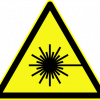How genes influence our response to the flu vaccine
Interview with
Chris - Vaccines are regarded as one of the most important advances in preventative medicine. But they don't always work. Why is this and can the patterns of gene activity, this ensue when a person is vaccinated give us clues as to why and how to improve things? John Belmont...
John - Influenza vaccines are incompletely effective. Influenza is an extremely important disease. Many millions of infections occur every year. In fact, we think that about 2% to 7% of the entire population gets an influenza infection every single year. The mainstay of preventing influenza in the medical complications is seasonal vaccine. But because the vaccine doesn't protect everyone, what we wanted to do is try to use new genetic methods to try to get a better understanding of what were the differences between people making a higher response and those making a lower response.
Chris - How did you do that?
John - We carried out two clinical trials. These are medical experiments, so we went to the Texas A&M University about 100 miles from Houston and we enrolled college students by and large. This is a really interesting group of subjects because they were very healthy and many of them exercising and not having a lot of other kind of medical issues that complicate our interpretations. So, we then immunised these young adults with seasonal influenza vaccine and tested them both before they got the vaccine and at the three timepoints - 1 day, 3 days, and 14 days after the vaccine was administered.
Chris - What specifically were you measuring?
John - We did something that had not been done before and that is, we were able to measure all of their gene activity in a global way. So, we used an inexpensive microarray technology that allowed us to get an estimate of the activity of all of the 21,000 or so genes that possibly could be expressed.
Chris - This is on blood?
John - That's right, but the distinction here is that we also extracted RNA so that we could measure the gene activity. At the same time though, we did extract the DNA because what we wanted to do was to find the common variance that all of us have to see what impact those common genetic variance had on the level of the gene activity. Essentially, what we're trying to do is build a bridge between the very complicated final outcome that is making the antibodies in response of the vaccine and the intermediate changes in gene activity.
Chris - What did you see in the blood of these participants at those different timepoints after the vaccine?
John - There's a very characteristic 3-phases of the response. First is the baseline and then in the first 24 hours, there's a response of the innate immune system. These are the basic responses that the body has to any kind of infection, a virus or a bacteria. And then there is a kind of revolution that indicates that the blood cells are proliferating and what is really interesting about this is that we have an independent data set that's not described in this paper that gives us an indication of what happens during a naturally occurring influenza infection. And the vaccine response is very parallel to that - it's just the vaccine is like a weak version of what happens during a natural influenza infection.
Chris - Is this a killed vaccine that you gave them?
John - Yes, that's right. so, the vaccine itself is made from killed virus particles.
Chris - How did you then establish downstream vaccination who had responded and who hadn't?
John - Well, we spent a lot of effort making mathematical models of that response, but we did actually see a fairly clear pattern, that is, there were clearly some high responders and some that were lower than we expected. And so, there is an understandable pattern in the distribution of responses.
Chris - So, is the idea here that you could then say, well, can we find why those people who don't respond so well appear not to and then tweak the vaccine in some way, in order to beef up the response in those people who are poor responders.
John - That's clearly what we're hoping for in the long run, by getting a better understanding of what mechanisms are quantitatively different between people who are making a high response. And those making a low response, we would hope to be able to adjust either the vaccine dose or some of the qualitative aspects of how the vaccine is prepared, to try to overcome those who are making a lower response. So, I mentioned before that the vaccine is stimulating pathways that are a lot like what's happening during a naturally occurring infection. So, if we try to make a vaccine that actually doesn't stimulate those pathways, it's likely not to work as well. And so, incorporating components into the vaccine that stimulate the innate immune system may be quiet important in having an effective vaccine.
Chris - Now, one thing that's a major problem for certain people is that they're non-responders to a range of vaccines. Hepatitis B is a good example, especially for healthcare workers. So, could you take a technique you've identified here for flu and apply this to try to work out why people don't respond to other kinds of vaccines?
John - We're actually hoping that our study design approach will be a very good way to test vaccines early in their development, so that we could better understand when a vaccine is going to be effective and try to make adjustments in manufacturing. So, the answer is, we certainly hope so and we would like to work with other groups involved in developing vaccines.
- Previous Stem cells and tropical diseases
- Next Looking into blindness










Comments
Add a comment